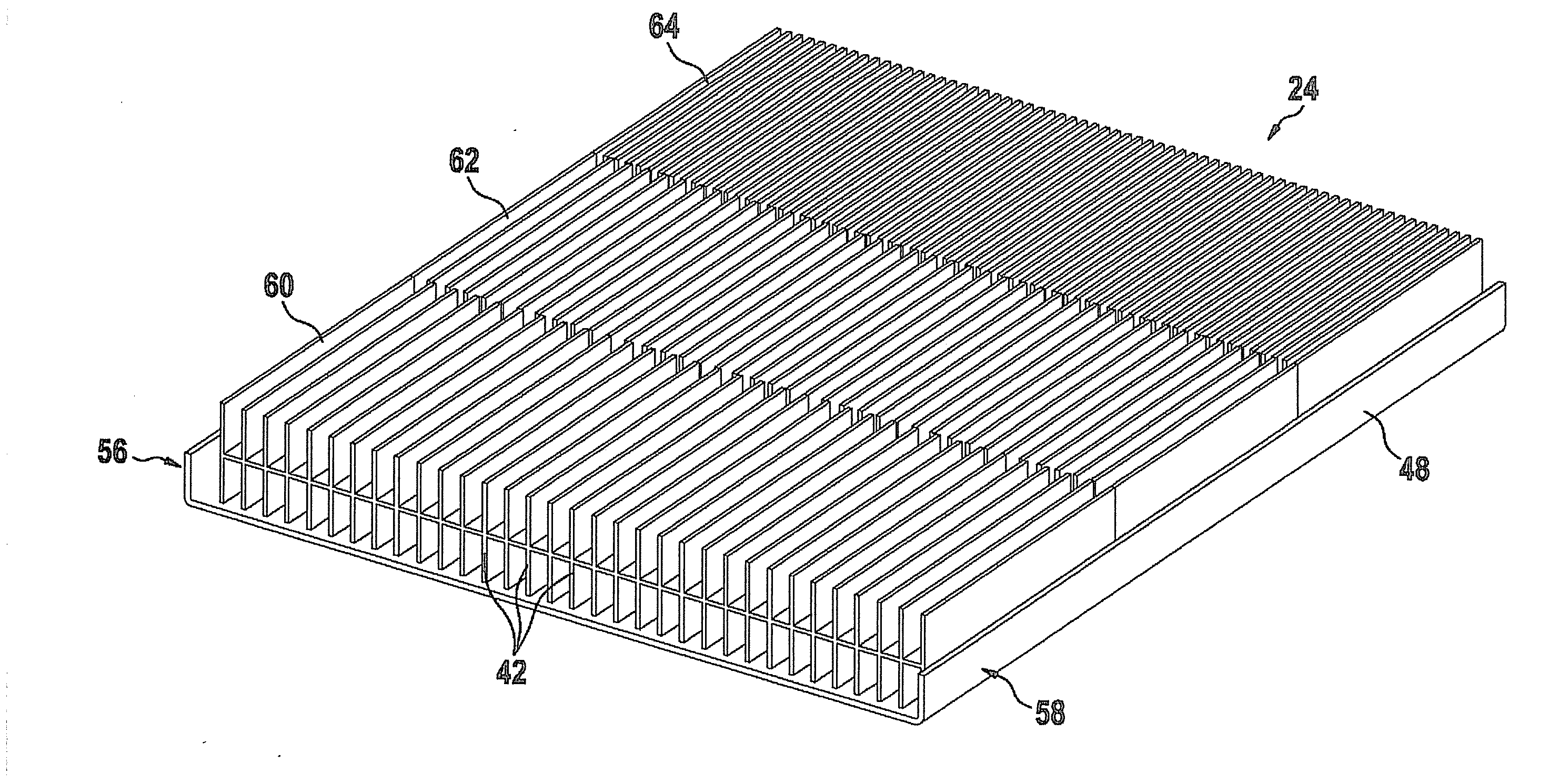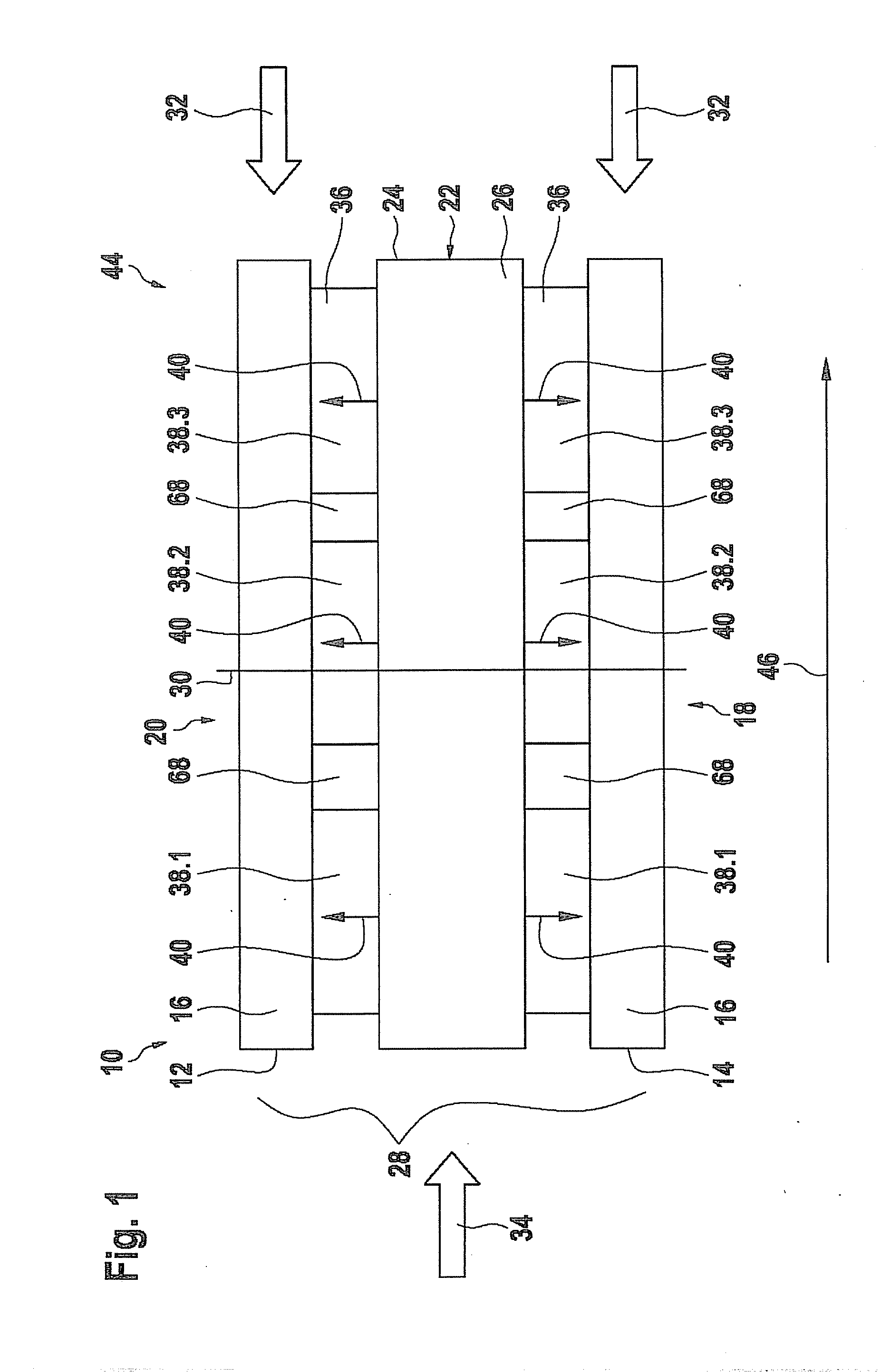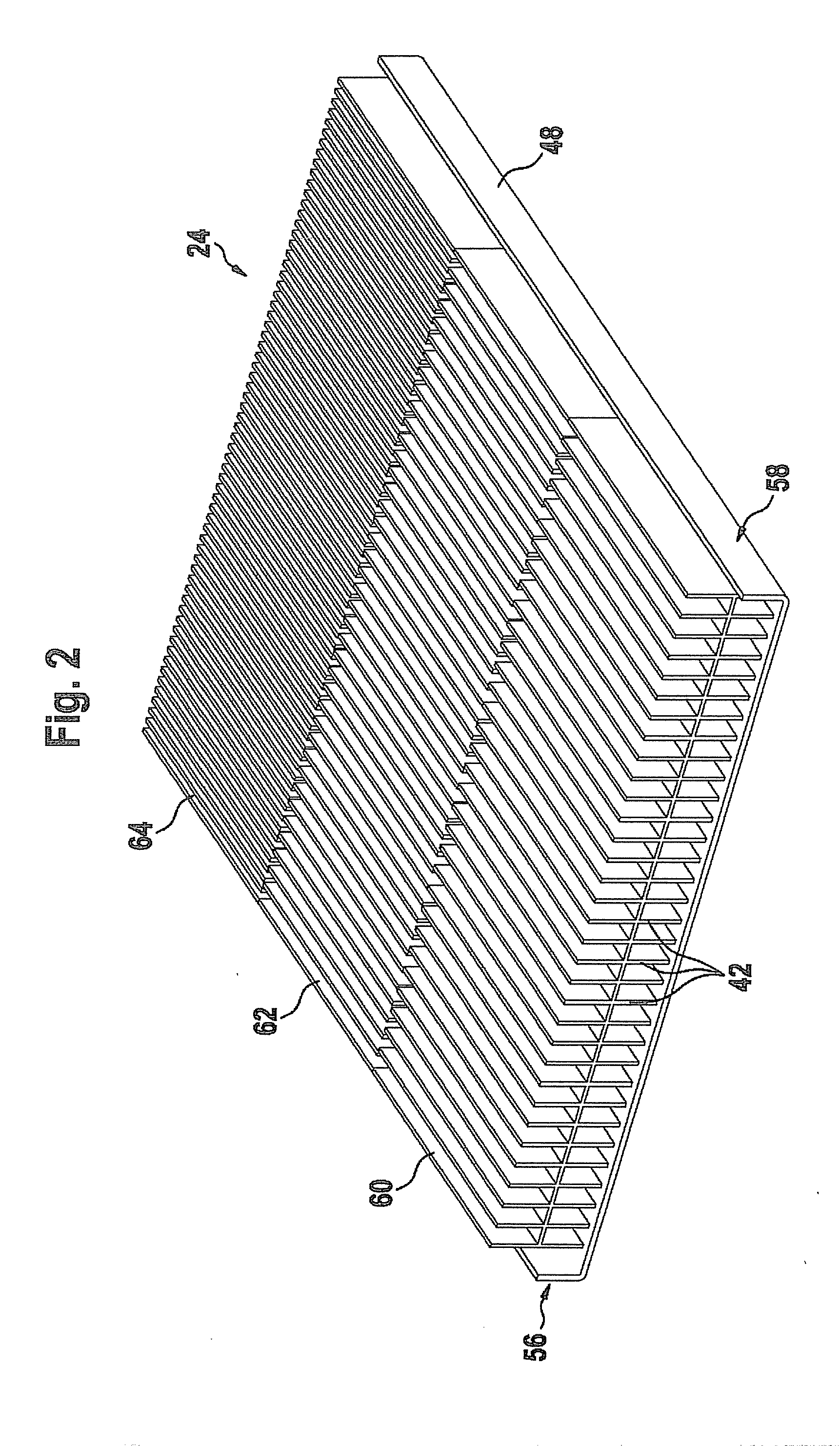Heat exchanger for thermoelectric generators
a heat exchanger and thermoelectric generator technology, applied in the direction of machines/engines, lighting and heating apparatus, laminated elements, etc., can solve the problems of reducing the overall available energy, reducing efficiency, and inefficient work of thermoelectric generators, so as to increase the overall heat flow, reduce the cost of heat exchange, and increase the temperature difference between conductors
- Summary
- Abstract
- Description
- Claims
- Application Information
AI Technical Summary
Benefits of technology
Problems solved by technology
Method used
Image
Examples
Embodiment Construction
[0024]FIG. 1 represents a possible layout of a heat exchanger having ribbed heating channels and three rows of thermoelectric generators (TEG) in the flow direction.
[0025]In one possible type of embodiment, a heat exchanger 10 may have two channels 12, 14 for a cooling medium 16 as a heat sink. The one channel 12 for cooling medium 16 runs on a lower side 18 of heat exchanger 10, in this context, and second channel 14 for cooling medium 16 runs on upper side 20 of heat exchanger 10.
[0026]In the middle 22 of heat exchanger 10 there is located an additional channel 24 for a heating medium 26, which functions as a heat source.
[0027]Channels 12, 14 for cooling medium 16 and channel 24 for a heating medium 26 extend in planes that are parallel to one another and, in the process form a stack 28 having a stack axis 30. As seen along stack axis 30, channels 12, 14 for cooling medium 16 and channel 24 for heating medium 26 are situated alternatingly.
[0028]Other combinations of alternating ch...
PUM
 Login to View More
Login to View More Abstract
Description
Claims
Application Information
 Login to View More
Login to View More - R&D
- Intellectual Property
- Life Sciences
- Materials
- Tech Scout
- Unparalleled Data Quality
- Higher Quality Content
- 60% Fewer Hallucinations
Browse by: Latest US Patents, China's latest patents, Technical Efficacy Thesaurus, Application Domain, Technology Topic, Popular Technical Reports.
© 2025 PatSnap. All rights reserved.Legal|Privacy policy|Modern Slavery Act Transparency Statement|Sitemap|About US| Contact US: help@patsnap.com



